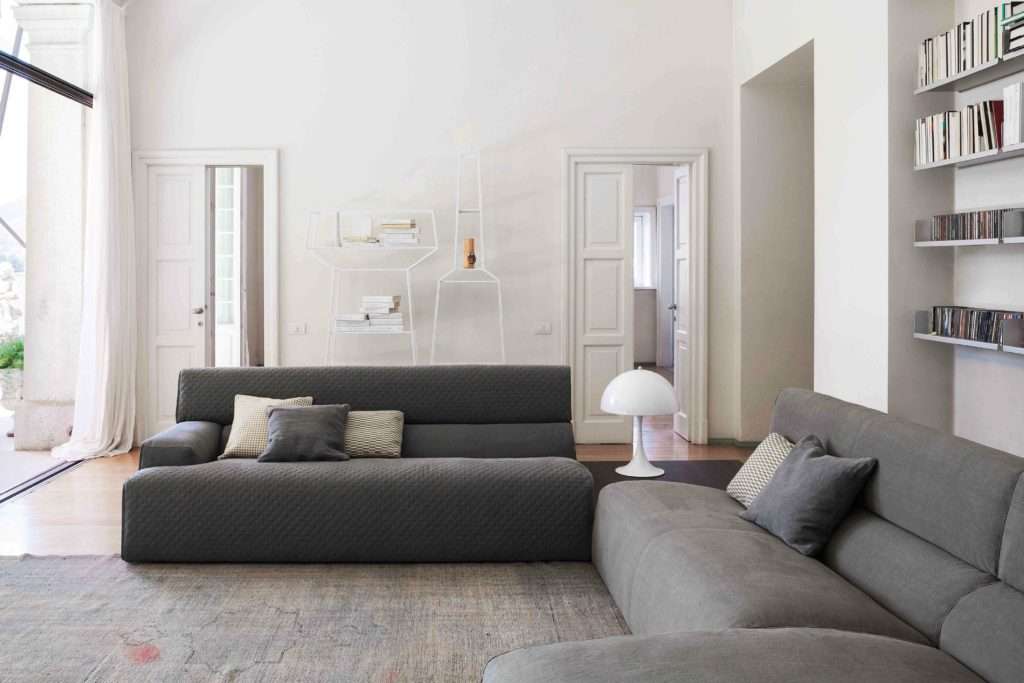The sofa is often the centerpiece of the living room—a place to relax, entertain guests, and even unwind after a long day. With so many options on the market, choosing the perfect sofa can feel overwhelming. The right sofa can elevate your space, providing both comfort and style, while the wrong one can disrupt the flow of the room. At Scale & Structure, we understand the importance of a well-chosen sofa that suits your lifestyle and complements your home’s aesthetic.
In this blog, we’ll guide you through the process of selecting the perfect sofa for your living room, considering everything from size and style to materials and functionality. Let’s dive into the essential factors you need to consider before making this important purchase.

1. Consider the Size of Your Living Room
Before you even start thinking about fabric or color, it’s crucial to measure your living room to ensure that the sofa fits comfortably within the space. A sofa that’s too large can overwhelm a small room, while a sofa that’s too small might make a large room feel disconnected or sparse.
How to Measure for the Perfect Fit:
- Measure the Space: Start by measuring the length and width of your living room. Be sure to leave room for walking paths around the sofa, and consider any additional furniture that will be placed nearby, like coffee tables or side tables.
- Check the Sofa Dimensions: When shopping for sofas, always check the dimensions. A standard sofa usually measures between 72 and 96 inches in length, while sectionals can vary greatly depending on the configuration.
- Think About Seating Capacity: Consider how many people typically use the sofa at once. If you entertain often, a larger sofa or sectional might be ideal. For smaller families or spaces, a loveseat or a smaller sofa might be more suitable.
Scale & Structure Tip: Ensure that the sofa doesn’t overpower the space or feel cramped. A good rule of thumb is to leave at least 18 inches of space between the sofa and any surrounding furniture.
2. Choose the Right Style
The sofa you choose should reflect the overall aesthetic of your living room. Whether your style is modern, traditional, or somewhere in between, there’s a sofa style that will complement your home’s design.
Popular Sofa Styles:
- Modern and Contemporary: Clean lines, low profiles, and minimalist designs define modern sofas. If you’re going for a sleek, updated look, opt for a sofa with metal or wood legs, and consider neutral or bold accent colors.
- Traditional: For a classic and timeless look, a traditional sofa features tufted backrests, rolled arms, and rich upholstery fabrics. This style works well in formal or more traditional spaces.
- Mid-Century Modern: Featuring wooden legs and angular lines, mid-century modern sofas combine retro vibes with contemporary flair. A great choice if you want something stylish but comfortable.
- Sectionals: If your living room is spacious and you need additional seating, sectionals are a versatile and stylish option. They come in many configurations, allowing you to create a layout that fits your needs perfectly.
Scale & Structure Tip: When choosing a style, consider how the sofa will pair with the rest of your room’s décor. The goal is to create a cohesive look, whether you’re working with a bold, eclectic design or a calm, minimalist space.
3. Prioritize Comfort
Your sofa should be comfortable as well as stylish. After all, it’s where you’ll be spending a lot of time! Comfort depends on a variety of factors, including cushion filling, upholstery, and frame construction.
What to Look for in a Comfortable Sofa:
- Cushion Filling: Sofas come with different types of cushion fillings, such as foam, down, or a mix of both. Foam cushions tend to be firmer, while down cushions are softer and more plush. If you want a balance, look for a sofa with a combination of both for the best of both worlds.
- Seat Depth: Seat depth is crucial for comfort. If you prefer to lounge, a deeper sofa with more seat space might be ideal. For more formal seating, a shallower seat might be better. Aim for a seat depth between 20 to 25 inches.
- Upholstery Material: The fabric on your sofa is not just about appearance; it also affects comfort. Choose a fabric that suits your lifestyle and feels pleasant to the touch. Popular upholstery materials include linen, velvet, leather, and cotton.
- Back Support: Look for a sofa with good back support, especially if you plan to use it for long periods of time. High backs or cushions with ample support can make a significant difference in comfort.
Scale & Structure Tip: If possible, test the sofa before purchasing. Sit on it, relax, and gauge how it feels. Pay attention to whether the cushions feel supportive and whether the seat depth suits your preferred lounging style.
4. Choose the Right Upholstery Fabric
The fabric you choose for your sofa impacts both its look and its durability. Consider your lifestyle—whether you have pets, young children, or frequent guests—before settling on a material.
Popular Upholstery Fabrics:
- Leather: Leather is durable, easy to clean, and adds a sophisticated touch to any room. It’s a great choice for modern or industrial-style living rooms.
- Velvet: Velvet gives a luxurious, plush feel to your sofa, making it perfect for a more elegant or contemporary look.
- Cotton and Linen: Soft and breathable, cotton and linen fabrics work well in casual or rustic living rooms. They’re also easy to clean and maintain, but they might show wear over time.
- Microfiber: Microfiber is durable, stain-resistant, and soft to the touch. It’s a great option for families with children or pets.
Scale & Structure Tip: Consider the longevity and maintenance of the fabric. Light-colored fabrics may need more frequent cleaning, while darker tones are more forgiving.
5. Don’t Forget About the Sofa’s Frame and Durability
A sturdy frame is the foundation of any high-quality sofa. Sofas with solid frames tend to last longer and offer better support. When shopping for a sofa, always ask about the frame material and construction.
What to Look for in a Durable Sofa Frame:
- Wooden Frames: Hardwoods like oak, maple, and beech are durable and reliable. These are great options for long-lasting sofas.
- Metal Frames: Some modern sofas come with metal frames, which can provide sleek, modern designs with strong support.
- Corner Blocks: Check that the frame has corner blocks, which help reinforce the structure and prevent wobbling or sagging over time.
Scale & Structure Tip: A high-quality sofa frame can make a big difference in the longevity of your piece. Always check the warranty and return policy to ensure you’re investing in a well-built product.
6. Set a Budget
Finally, consider your budget before making a decision. Sofas come in a wide range of price points, from budget-friendly to high-end designer pieces. Set a realistic budget based on your needs, and be prepared to invest in a sofa that will provide comfort and style for years to come.
Scale & Structure Tip: While it’s tempting to go for the cheapest option, a well-made sofa is an investment that will last. Look for deals, sales, or discounts on high-quality furniture to get the most value for your money.
Conclusion: The Perfect Sofa for Your Living Room
Choosing the perfect sofa for your living room is about finding the right balance of style, comfort, and functionality. By considering factors like size, style, material, and durability, you can select a sofa that enhances your living space and fits your lifestyle. At Scale & Structure, we specialize in helping clients find furniture that not only looks beautiful but works perfectly in their homes.



